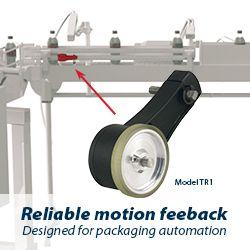Robot Installations in Japan up by 9% - IFR reports
Japanese exports achieved a new peak level at 207,737 units in 2022, adding another 12% to the previous peak level of 2021
Industrial Robot installation in Japan rose by +9% and reached 50,413 units in 2022. This result is exceeding the pre-pandemic level of 49,908 units in 2019. Japan ranks second to China as the largest market for industrial robots worldwide. It is also the predominant industrial robot manufacturing country with a global market share of 46%.
"Japanese exports achieved a new peak level at 207,737 units in 2022, adding another 12% to the previous peak level of 2021," says Marina Bill, President of the International Federation of Robotics. "The country's export ratio rose 1 percentage point to 81%. Japanese imports of robots have always been extremely low: 1,343 units were imported in 2022, representing only 3% of the installations."
Japanese robot suppliers have increased their production capacity considerably in recent years. Like other international robot suppliers, Japanese suppliers often serve the Chinese market directly from their factories in China. Japanese robot producers have also established production sites in other countries. Japanese suppliers were able to benefit comprehensively from the Chinese post-crisis boom that started in the second quarter of 2020. The value of exports increased by 21% to ¥496bn (US$3.8bn), setting a new peak value in 2022.
In 2022, domestic production of industrial robots in Japan reached another new record level of 256,807 units, exceeding the record set in the previous year by 11%. From 2017 to 2022, production in Japan grew by 4% on average per year. This refers only to domestic production and does not include production sites abroad.
Outlook
Economic observers see major headwinds for the Japanese economy due to rising energy prices and price increases for raw materials due to a weakening yen as well as in a lack of demand from the USA and China as major export destinations. There are, however, reasons to be more optimistic with regard to robotics. Weakening of the yen against the US dollar makes exports from Japan cheaper, which is beneficial for exports of the Japanese robotics industry. In the domestic market, the Japanese government took action to make the economy more resilient to disruptions in international trade.
Featured Product

Model TR1 Tru-Trac
The Model TR1 Tru-Trac® linear measurement solution is a versatile option for tracking velocity, position, or distance over a wide variety of surfaces. An integrated encoder, measuring wheel, and spring-loaded torsion arm in one, compact unit, the Model TR1 is easy to install. The spring-loaded torsion arm offers adjustable torsion load, allowing the Model TR1 to be mounted in almost any orientation - even upside-down. The threaded shaft on the pivot axis is field reversible, providing mounting access from either side. With operating speeds up to 3000 feet per minute, a wide variety of configuration options - including multiple wheel material options - and a housing made from a durable, conductive composite material that minimizes static buildup, the Model TR1 Tru-Trac® is the ideal solution for countless applications.
